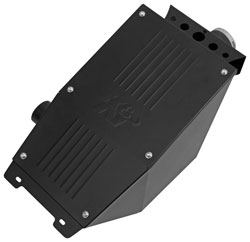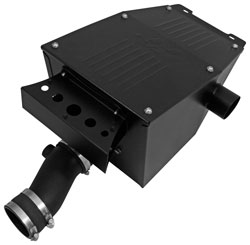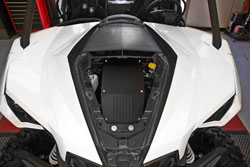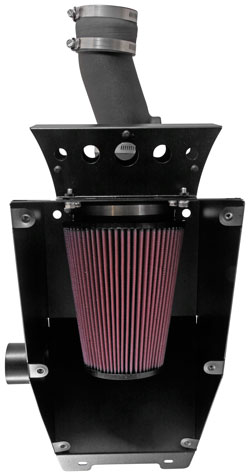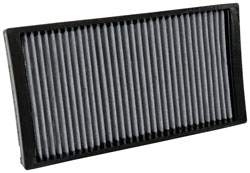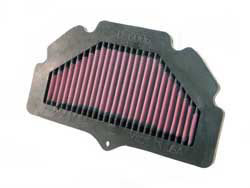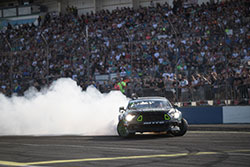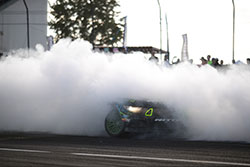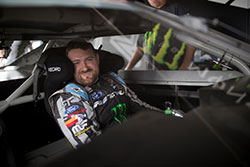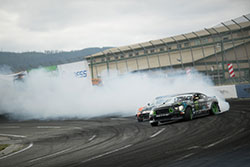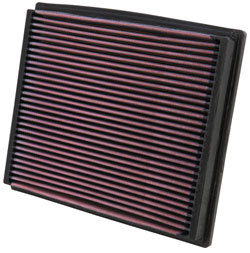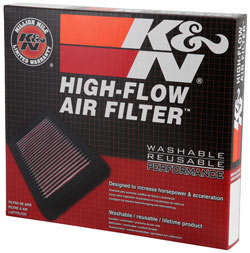2015 to 2016 Can-Am Maverick UTV Air Intake Kit Boosts Horsepower and Helps Protect Engine
- 12 ago 2016
One of the most popular motorsports today is racing all-terrain vehicles. However, these vehicles are also ideal for recreational rides through forest and mountain areas, and through streams and rough terrain. Moreover, they have a more practical use providing assistance performing tasks on farms and construction sites as well as other work-related activity in harsh environments.
One of the most popular manufacturers of these vehicles is Bombardier Recreational Products (BRP), a Canadian company that makes ATVs, snowmobiles, motorcycles, and Spyder Roadsters for Can-Am. One of the most popular Can-Am side-by-side UTVs is the Maverick, which includes the MAX X, MAX, and Maverick. First introduced in 2013, the Can-Am Maverick 1000R is a sports utility style UTV that is equipped with a 976 cc, liquid cooled, V-Twin, SOHC, 4-Stroke Engine, dual exhaust and a continuously variable transmission (CVT). It also features double A-arm suspension in the front, independent torsional trailing A-arms suspension in the rear and ground clearance of 13-inches (33cm). In addition, there are front dual hydraulic disc brakes on the front wheels and dual hydraulic disc brakes on the rear. The Rotax® engine generates 101-horsepower and sits mid-vehicle in a sport-tuned frame specifically designed for the Maverick. The steel frame assists in providing great traction, agility and handling. Yet it is more rigid than other side-by-side UTVs. It also features removable free-standing seats; adjustable driver seat, and tilt steering; 2-inch diameter, steel, ROPS-approved cage; 31.6-liters of cockpit storage; multifunction digital gauge; 12-inch centerless cast-aluminum wheels; digitally encoded security system; front and rear Fox Podium X Performance 2.0 HPG piggyback shocks with compression and preload adjustments. This permits the driver to adjust the ride to whatever the surface. Debuting in 2014, the Can-Am Maverick MAX 1000R XRS DPS is a sports utility style UTV that is powered by a 976cc, liquid cooled, V-Twin, SOHC, 4-Stroke Engine and also includes a CVT transmission. It features a double A-arm front suspension and rear independent suspension and Fox Podium X Performance 2.0 HPG piggyback shocks and offers 14-inches of travel front and rear. It relies on dual hydraulic disc brakes front and rear. It rests on 12-inch aluminum beadlock wheels and also includes analog/digital gauge, and custom steering wheel with brushed-aluminum center The Maverick 1000R X ds includes a Turbo engine that generates 131-horsepower with better torque and includes larger injectors and increased boost pressure. A larger Donaldson airbox is now closer to the engine to improve airflow and an electronic throttle-by-wire system works in conjunction with a 54mm Bosch throttle body to help produce smooth delivery even if the driver's foot is bouncing on and off the pedal due to rough terrain. Its 88-inch wheelbase supplies a better ride at higher speeds and in tight cornering. Despite its longer wheelbase, the X ds has a short turning radius for precise and agile maneuverability and offers 16-inches of travel.
The Maverick 1000R X MR includes air control suspension with Fox air assist HPG piggyback shocks, analog/digital gauge, and 14-inch ITP cast aluminum wheels. The CVT transmission system can be calibrated for wet terrain and conditions. A dedicated drain plug is included in the cover and can be used to remove water from the CVT housing. The CVT intake is high on the chassis so that the machine can perform in wet riding conditions. The CVT exhaust and engine air intake is up as high as possible on the vehicle to avoid muddy, wet conditions. Tri-mode dynamic power steering (DPS) offers variable steering assistance and is designed to supply less help at high speed and more help at low speed. Moreover, the driver can program his or her preference of three modes –- Hi, Med, and Lo. DPS equipped models include Visco-Lok QE calibration to give a quicker engagement of the front differential. It transfers power from a slipping front wheel to the gripping wheel automatically with no buttons to push or levers to pull.
K&N offers the 63-1135 air intake kit for several models of the Maverick. The intake increases horsepower and improves throttle response and engine sound. It is designed to replace the entire factory air intake system and includes a free-flow high-density polyethylene tube. It is designed to reduce inherit restrictions in the factory intake and smooth and straighten airflow. The side-by-side UTV air intake kit comes with a black rubber topped K&N high flow air filter in an embossed air box that installs into the space for the original factory air box under the hood panel. The kit also includes an aerodynamically engineered intake tube that goes into the engine's throttle body to ensure power gain. The intake tube is designed to incorporate the factory crank case vent hose. The system can be installed in about 90 minutes utilizing the vehicle's existing factory mounting points. All you need is a few simple hand tools. Since the filter is washable and reusable it can simply be cleaned, re-oiled using the 99-5000 air filter cleaning kit and reinstalled in the intake. The K&N 63-1135 air intake kit fits the following UTVs: 2016 CAN-AM MAVERICK MAX 1000R X DS 976 You can view all the K&N performance products for any vehicle by using the Search by Vehicle tool and you can find a local K&N retailer by plugging your location into the K&N Dealer Search as well. |
||||
|
||||

